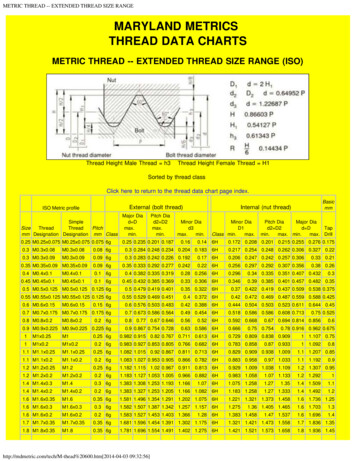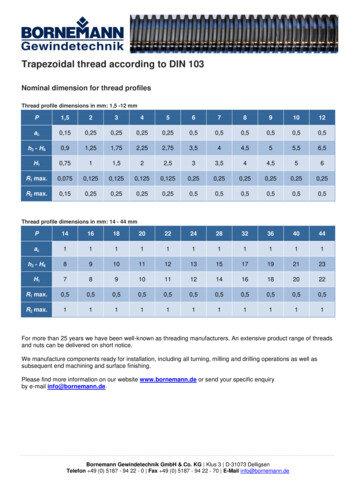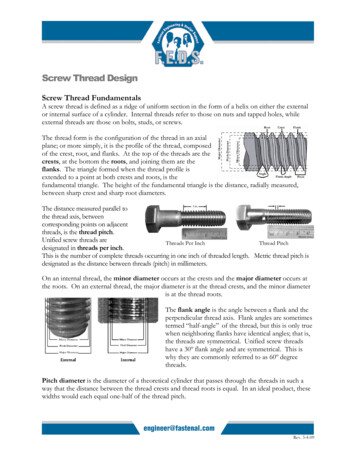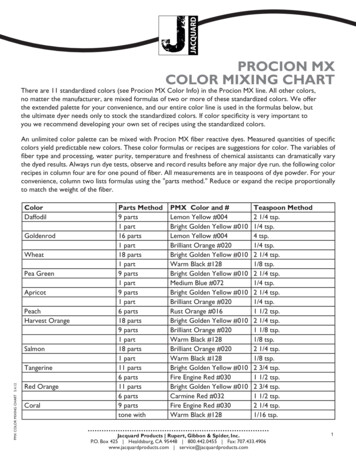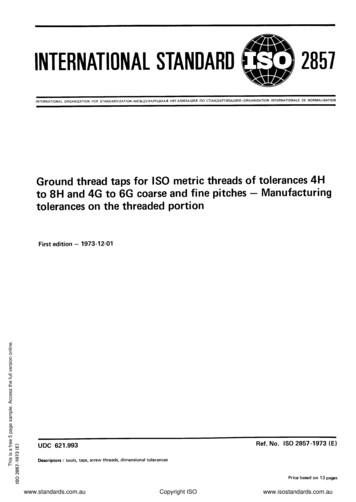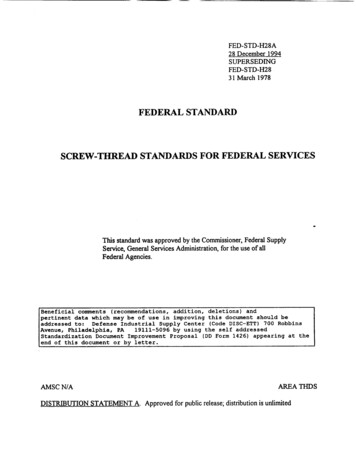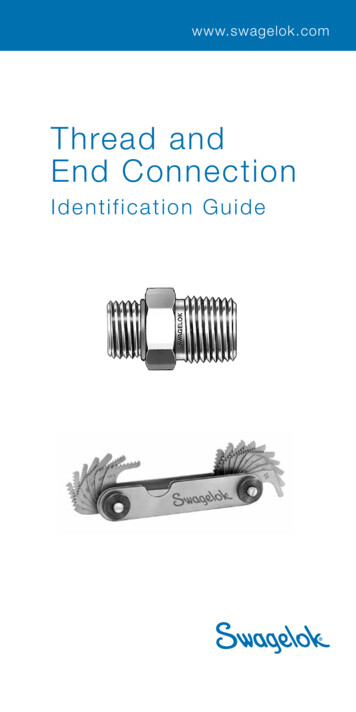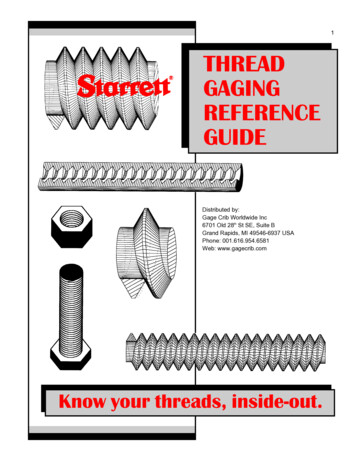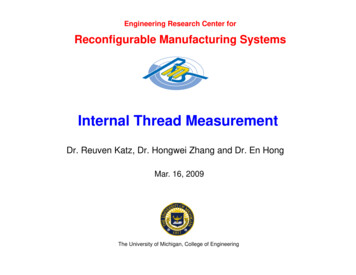
Transcription
Engineering Research Center forReconfigurable Manufacturing SystemsInternal Thread MeasurementDr. Reuven Katz, Dr. HongweigZhangg and Dr. En HonggMar. 16, 2009The University of Michigan, College of Engineering
Project OverviewGoals: Develop methodologies for the inspection of geometrical features ofinternal threads in machined automotive parts.Deliverables and benefits The two methods to be presented enable in-process internal threadq alit verificationqualityerification usingsing optical sensors.sensors The approaches allow to extract thread pitch, major and minor diameter,flank angle and even the starting point of the thread with respect to areference location on the perimeter.perimeterMain tasks Laser scan measurement using Optimet sensor Optical inspection using a CCD camera with sightpipe R&R test to be done partiallyNSF Engineering Research Center for Reconfigurable Manufacturing SystemsUniversity of Michigan College of Engineering2
Methodology using a laser sensor and set-upPrincipleInternal ThreadRotaryMotionZ axisProbeMirrorOpticalSensorX axisZYXRotary StageMotorizedMotion StagesperiscopeRotaryMotionY axisMotion StagesMethod:PeriscopeMeasuring internal threads using a Laser Range Finder (Optimet Sensor)Sensorintegrated with a motorized periscope designed at ERC.45 Mirror insideStepper MotorNSF Engineering Research Center for Reconfigurable Manufacturing SystemsUniversity of Michigan College of Engineering3
Measurements results of M12X1.25 internal threadSTANDARD: ANSI/ASME B1.13M-1983 (R1995)M12 X 1.25 Unit: mmMinor Diameter --D1MinMin.MaxMax.10.64710.912Pitch Diameter --D2MinMin.MaxMax.TolTol.11.18811.3680.18Major Diameter --DMinMin.MaxMax.1212.360Measured ParametersPitch (mm)Height (mm)Major Dia. (mm)Minor DiaDia. (mm)180 1.2510.69612.01410 66710.66790 1.2520.539270 1.2460.61512.12710 87110.871Average1.2490.62212.07110 76910.769Minor Dia.Major Dia.0 1.2480.639ΔPitchConclusion 1:Compared to the standard data, all the parameters we get arewithin acceptable limits for the designated thread type.NSF Engineering Research Center for Reconfigurable Manufacturing SystemsUniversity of Michigan College of Engineeringaxial cross section4
Measurements results of starting location of a threadMethod: Measuring the axial distance between the edge of the threadedbore and the center point of the bottom of the first thread tooth. Four measurements were taken at four different angles. The areaof thread started is determined by comparing these four values. Theoretically, the largest and smallest must be neighbors and thestartingt ti pointi t off theth threadth d iis llocatedt dbbetweentththem.Conclusion 2:90 Δ 2.288Area ofThread StartedIII180 Δ 1.9420 Δ 2.531IIIIV* The starting point of the thread is located in quadrant IV.* The helix is clockwise.270 Δ 1.384radial cross sectionNSF Engineering Research Center for Reconfigurable Manufacturing SystemsUniversity of Michigan College of Engineering5
Methodology and setup based on a CCD and a Sight-pipe360 degree view fromthe sight pipeSelected annular zoneReconstruct finalimageLens & IlluminationDefine the annular Zone ofeach FrameExtract and unwrap theannular Zone of eachFrameStitching Line stripSight PipeCCD360-degree-view Line Scan FlowTilt StagesMotion stagesLEDIlluminationInternal Thread Measurement SystemConical LensOptical principle of the sight-PipeThe integrated sensorNSF Engineering Research Center for Reconfigurable Manufacturing SystemsUniversity of Michigan College of Engineering6
Measurements results1. A smoothing filter followed by Prewitt filter is used to bring out edges.2. LabVIEW Shape detection is used to extract average angle of threads.3. A series of line profiles are generated perpendicular to the threadlines and peaks are detected.NSF Engineering Research Center for Reconfigurable Manufacturing SystemsUniversity of Michigan College of Engineering7
Discussion on Method 2 (3D Digitalization)NSF Engineering Research Center for Reconfigurable Manufacturing SystemsUniversity of Michigan College of Engineering8
Internal Thread MeasurementInternal Thread Measurement Dr. Reuven Katz, Dr. Honggg gwei Zhang and Dr. En Hong Mar. 16, 2009 The University of Michigan, College of Engineering. Project Overview Goals: Develop methodologies for the inspection of geometrical features of internal threads in machined automotive parts. The two methods to be presented enable in-process internal thread q alit .
